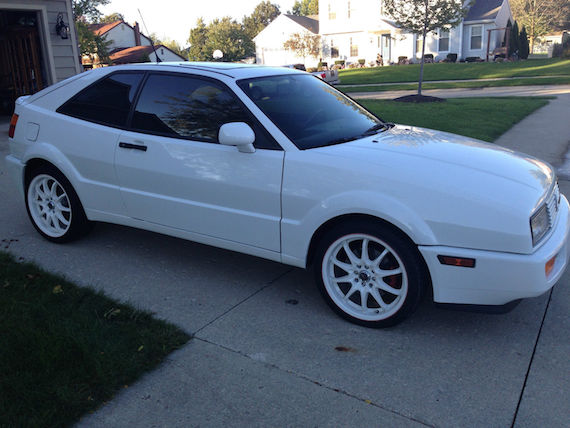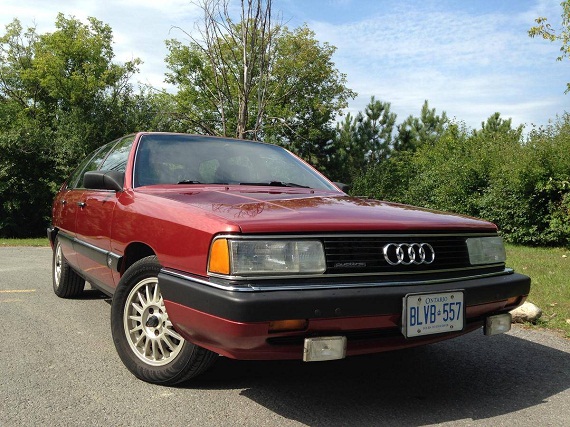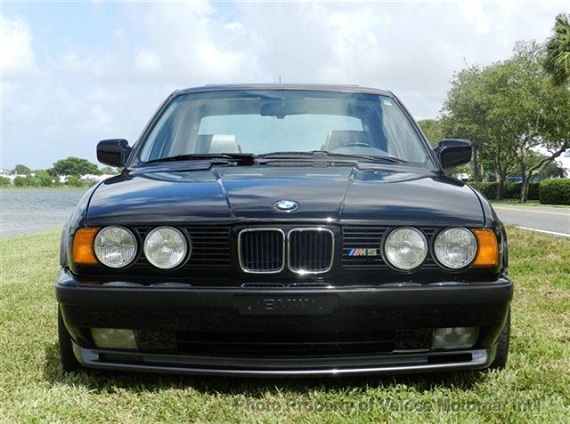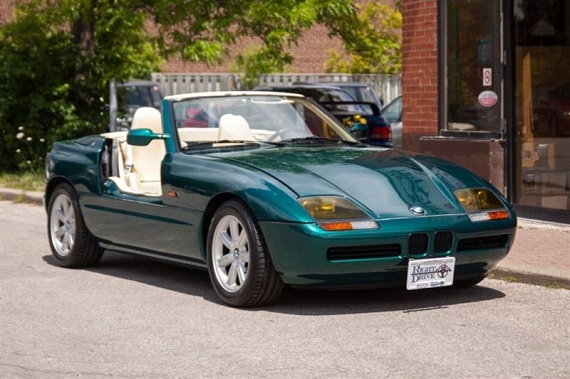Though it sits in a forgotten corner of the enthusiast realm for most of the time, the Corrado will always be a cool car. While the original Scirocco was a stunner, the second generation was a bit dumpy. The Corrado brought great looks and an allegedly transcendent driving experience with some very appealing engine choices, creating a sporty compact FWD hatchback that had many strengths. Price was a downfall, as it may be for today’s example. It looks very nice in a fresh coat of white paint and the matching wheels – sometimes a death knell – look appropriate. Apparently they were part of a $25k-round of investment though, which should be reserved for classic cars and startup companies.
Tag: 1991
As has happened with other series of cars, such as Audi S4s, there are currently several generations of BMW M5s that are converging on value, leaving you with some hard decisions as to which you’d prefer. Indeed, from their start through the E60 M5, the sports sedan got larger and heavier, but gained 2 cylinders per generation and corresponding power levels. The E34 BMW M5 was a refinement and softening of the E28 original design but kept the race-bred S38 inline-6. Purists eyebrows raised when the new E39 M5 launched with a 5 liter V8, but the 400 horsepower soundtrack has subsequently has become a serious legend and fan favorite. Purists once again held their breath as the E60 M5 launched, now with a 5 liter V10 – a high revving, howling banshee of a motor. All of them are serious forms of motivation, and the value of the first 4 generations are all coming into line. While I wasn’t able to find a good example of an E28 M5 for this writeup, I have the subsequent three generations to check out – which would you choose?
CLICK FOR DETAILS: 1991 BMW M5 on eBay
6 CommentsFor some time, BMW has dared to look ahead towards the future; in the 1970s, BMW brought turbocharging to small sedans and even the idea of an efficient supercar. In the 1980s, BMW introduced the world to an entire range of sporting products with its M division – a blueprint which certainly all German, if not most manufacturers in general, follow today. More recently, BMW has pioneered “efficient dynamics” and brought the first realistic super-performance, ultra efficient car to the market with the i8. But in the 1990s, it was a different sort of revolution. BMW looked towards new technology in both electronic systems, manufacturing, car design and construction with its revolutionary 8 series and Z1. The E31 is a car well known to these pages, but as the Z1 was never imported to the U.S., it’s not a car that we often get to feature.
The Z1 was a complete departure for BMW; while they were not strangers to small cabriolets, their previous efforts were in the 1930s with the 315/1 and the 1960s with the 700. BMW went away from the idea of an integral body and frame to a separate chassis with removable, plastic body pieces. The idea was that the owners could replace the panels themselves to “repaint” the car with minimal effort. It was something the Smart car would be notable for – a car that launched a decade following the Z1. The doors didn’t open out – the slid down into the supporting chassis structure. In front was nothing new – the venerable M20 from the E30 popped up here, too – but in the rear the Z1 was new with a multi-link rear axle of its own. This new design would later be incorporated into the E36. It’s interesting that with the Z3 BMW opted to go the opposite route and incorporate earlier E30 pieces into the rear of the /7 and /8. While performance was relatively leisurely, the Z1 nevertheless garnered praise for its innovation, unique design and great looks:




